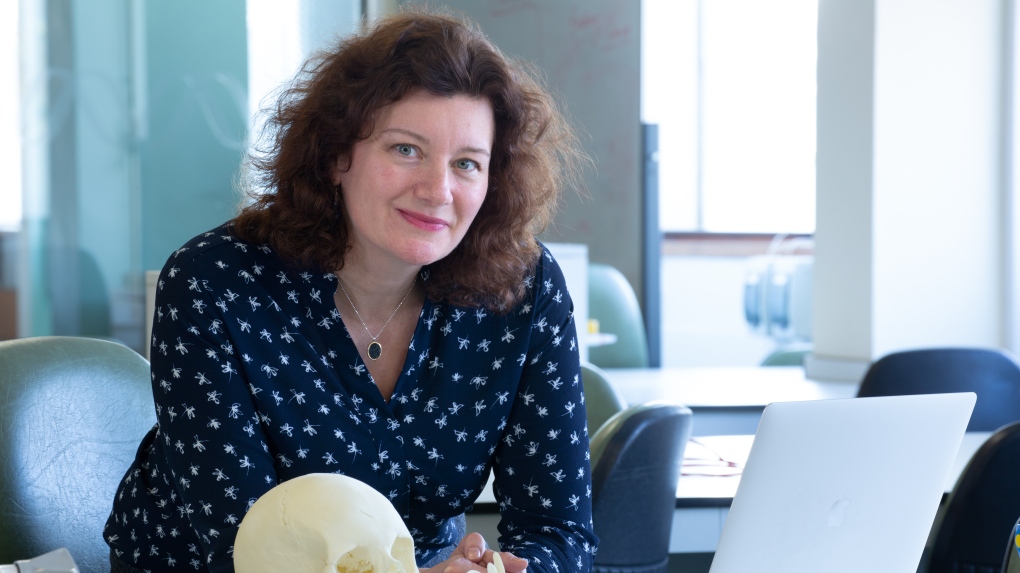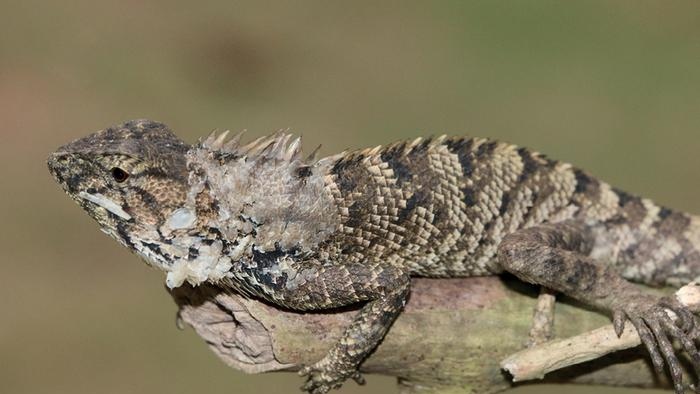Turi King takes pride in her work solving ancient and modern-day DNA puzzles – including a centuries-old mystery involving an infamous British king.
With a background in archeology and genetics, King says she gets many calls from people asking to help them in excavations to identify human remains.
A highlight in her career came from a request from the University of Leicester Archaeological Services. The team was hoping to find the long-lost remains of King Richard III under a parking lot in England and asked King to play a key role in the project.
King, who grew up in Toronto and Vancouver, jumped at the rare opportunity to be part of a potentially significant discovery. She led the excavation as well as genetic work and identification of the remains.
“That’s the thing about the work that I do. It’s a combination of historical scientific information as well as DNA,” the 54-year-old ancient and forensic DNA specialist, professor and former archaeologist said in a video interview with CTVNews.ca from Bath, England. “It’s bringing all of those pieces of the puzzle together. It’s not just one strand of evidence.”
Turi King has worked on the excavation as well as genetic work and identification of remains. (Turi King)
Contamination concerns
King and the University of Leicester team began piecing together the King Richard III puzzle in 2012. Donning a full hazmat-like suit with double gloves, face masks and hair nets, they were digging up a parking lot in Leicester in September of that year, King recalled 12 years later.
“So I helped to lead on doing clean excavation … because you have to worry about contamination with modern DNA on ancient remains,” King said.
When alive, the human body can repair any human DNA strands that get damaged, King said, but this doesn’t happen after death, when DNA starts to degrade and the strands become very short and “very damaged.”
If the remains have enough useable DNA, she compares it with known living relatives to find a match and confirm the identity of the individuals.
“All you need to do is breathe on these remains and you’re putting your DNA all over them,” she said, noting she also has to wear the protective gear while doing DNA analysis in a lab.
 Descendants of Richard III, Michael Ibsen, from left, Jeff Ibsen and Wendy Duldig place white roses on a coffin bearing the remains of Richard III in Leicester, England on March 22, 2015. (Rui Vieira / AP Photo)
Descendants of Richard III, Michael Ibsen, from left, Jeff Ibsen and Wendy Duldig place white roses on a coffin bearing the remains of Richard III in Leicester, England on March 22, 2015. (Rui Vieira / AP Photo)
Centuries-long quest
For centuries, archeologists were on a quest to find the infamous monarch’s long-lost grave.
King Richard III died at the Battle of Bosworth Field in 1485, and was buried without a coffin in the church of the Franciscan friars, or Grey Friars, in Leicester.
Henry Tudor then seized the throne, becoming King Henry VII. He was succeeded by his son, Henry VIII.
After Henry VIII had an argument with the pope, the king known for his six marriages ordered all Catholic monasteries and friaries to be closed, including the Grey Friars church. Over time, a large parking lot was built over it.
It was at the parking lot where King found herself and osteologist Jo Appleby excavating on Sept. 4, 2012.
Her team only had a budget to excavate up to six sets of remains, so they had to make careful decisions. They knew Richard was buried in the choir of the church so they searched this area.
They discovered human leg bones that day, but there were doubts about whether they belonged to Richard. King had to go to a forensics conference the next day, so her colleague finished the excavation herself. At first, she thought she wouldn’t miss anything and joked that the bones belonged to someone other than the king, like a 90-year-old friar.
She was floored to learn from her colleague that the skeleton was in fact a younger male with battle injuries and severe scoliosis, matching the characteristics of King Richard III.
They confirmed “beyond reasonable doubt” on Feb. 4, 2013, that the skeleton belonged to the 15th-century English monarch.
She and the team gathered DNA and historical clues through radiocarbon dating, which helps date the remains, and stable isotope data, which indicates diet and other indicators of where a person comes from.
Genealogists and historians also confirmed details in the royal family tree. Through DNA tests and bone analysis, she and her team found matches within a Canadian family who were direct descendants of Richard’s sister, Anne of York.
“It was just the most incredible, wonderful project to be involved in,” King said. “So we were able to say something about his hair and eye colour and how that matched portraits of Richard III.”
 DNA specialist Turi King says she loves connecting others to their family history. (Turi King)
DNA specialist Turi King says she loves connecting others to their family history. (Turi King)
Family secrets
Her work on genetic genealogy in forensics, historical and family history cases, including the King Richard III excavation, led to another exciting opportunity to work on a BBC TV series called “DNA Family Secrets” in 2020.
She currently co-hosts the show, which features people looking to solve family mysteries through DNA and genetic genealogy. The show relies on DNA testing and traditional genealogical and historical records to solve these mysteries.
One of the most emotional cases King says she worked on for the TV show involved a woman named Margaret who was adopted and wanted to find her mother. The only thing Margaret knew about her mother was she was from Ireland.
Since Margaret was in her 60s, she didn’t think her mother would still be alive, King said. Margaret told her she would love to know who her mother was, even if it was just a photo.
“We were able to trace her mom and she was still alive,” King recounted. “And we were able to give her a photo. She was able to meet her mom.”
Margaret travelled to Ireland to meet her mother for the first time. Her mother had dementia, but when Margaret held her mother’s hand, her mother wouldn’t let go, King said.
Margaret’s half-sister was telling her mother, “This is your daughter. She’s here,” King recounted.
“It was just incredibly moving to be able to give that to her, to give her her mom,” King said. “She’s been completely enveloped into this family in Ireland and it’s just been amazing to do.”
Filming the 2020 episode when King was able to tell Margaret the identity of her mother was emotional, King said.
“She’s in tears, I’m in tears, the production team’s in tears,” King said. “You can hear them sniffing in the background when we’re filming and you have to edit out all of this stuff where we’re just so moved by it all. They’re just such incredible stories, all of them.”
‘Incredible’ stories
While her day job involves advancing research on ancient and forensic DNA as director of the Milner Centre for Evolution at the University of Bath, King said helping connect individuals with family through DNA detective work has become her hobby.
Inundated with requests from many people in Canada to learn the truth about their families, she volunteers to do the work when she has time, though she regrets not being able to help everyone.
“These stories are just incredible and it’s the fact that you can connect people across the world,” King said. “I absolutely love that you can put families together like that.”
For DNA work, individuals’ tests are processed through two major DNA testing companies, Ancestry and 23andMe, which then allows King and the family members to browse potential matches in those databases. King also uploads raw DNA data to other websites, such as MyHeritage, in order to look for other matches, she said. The matches give clues on how people are related.
“And then from that, we can start building family trees and starting to work out how these genetic relatives are all related to each other and the person we’re trying to help,” she said.
In another case that she volunteered to do, she said Sir Paul Nurse, a Nobel Prize winner in his 50s, finally discovered the identity of his father.
He was applying from the U.K. for a green card to become president of Rockefeller University in New York City. He only had a short-form birth certificate that had his name and his birthdate on it. He later obtained his full birth certificate with a familiar name listed as his mother.
“So then he found out that actually his sister was his mom and that his parents were actually his grandparents and he had no idea who his dad was,” King said, explaining the space where his father’s name was supposed to be added was left blank.
As a guest on a radio show with him last year, she offered to help him look into the identity of his dad through DNA testing. Using the DNA information from a test he already completed, she started building the family trees and worked out who his late father was likely to be. She needed a DNA test from any of his children to confirm what her research suggested.
She began contacting people through places such as Facebook and Twitter and asking them if they would be willing to do DNA tests. As a result, Nurse discovered his dad’s identity, and found that he had six half-siblings.
“It’s hugely rewarding,” King said. “I love doing this sort of thing. I feel like it’s a gift that you can give to somebody to have this information.”
But for those seeking the truth about their families, it’s not always a happy reunion.
“It can be emotionally incredibly difficult and quite a roller coaster for people,” King said. “So sometimes you contact people and they don’t want to know, and that’s really hard for the person involved.”
In those cases, King said, she reassures people who sought the long-lost family member that it’s not personal.
“And we always say to them, ‘Look, this is not about you,'” she explained. “These people are not in a place in their lives right now where they can deal with this.”




